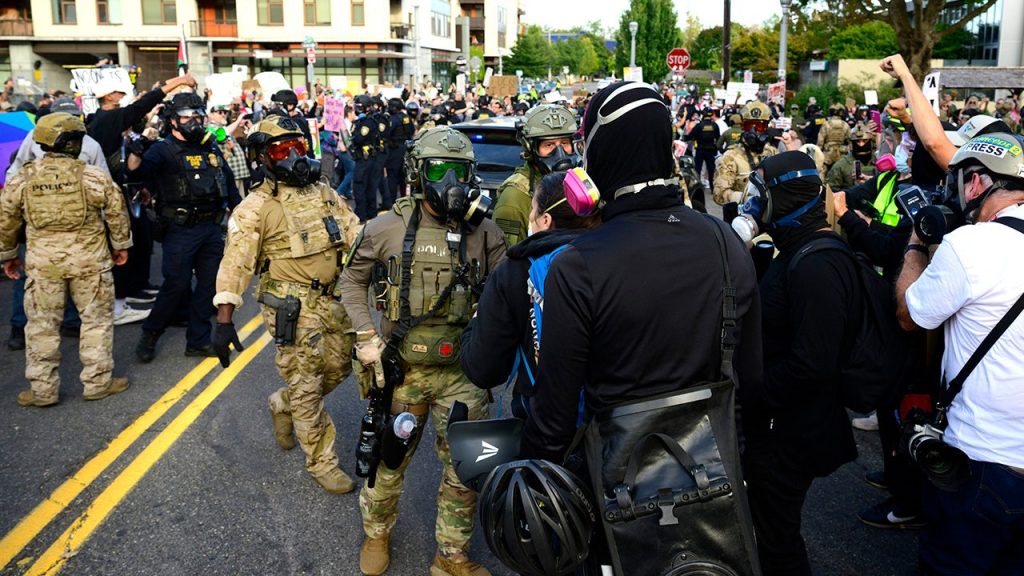Portland Police Chief Defends Department Amid Federal Criticism Over Anti-ICE Protests
In a thoughtful defense of his department’s approach to policing protests, Portland Police Chief Bob Day has presented a starkly different picture than that portrayed by federal officials regarding the ongoing anti-ICE demonstrations in the city. While Cammila Wamsley, director of Portland’s ICE office, has described more than 100 nights of escalating violence with little police support, Day argues that national media coverage often distorts the reality of Portland through outdated or selective footage. His response comes as tensions rise between local and federal authorities over protest management in a city that has become emblematic of America’s divided approach to immigration enforcement and public demonstration.
Day’s perspective reflects a department proud of its reforms and its city, emphasizing that Portland spans 145 square miles, yet media attention fixates on isolated incidents that don’t represent daily life for most residents. He points to tangible achievements: a 17% reduction in violent crime and successful facilitation of numerous peaceful protests throughout the city. Rather than abandoning federal buildings to protesters as some have alleged, Day explains that his department operates under a clear division of responsibility—the Federal Protective Service secures the ICE building itself, while Portland Police manage surrounding neighborhoods. He acknowledges ongoing investigations into violence between opposing groups at these protests, affirming that “free speech does not include freedom to commit crimes,” while maintaining that his officers are making arrests and pursuing prosecutions.
The chief draws a clear distinction between current protest management and the approach taken during Portland’s tumultuous 2020 demonstrations. He credits significant reforms in use of force, crowd management, and accountability for reshaping how the police operate. Day describes a philosophical shift from “crowd control” to “crowd support,” emphasizing outreach, preparation, and communication. This evidence-based approach incorporates crowd psychology and has fostered stronger community relationships while allowing for targeted intervention when necessary. The change represents not a retreat from enforcement responsibilities but rather a more sophisticated understanding of how police presence itself can sometimes escalate tensions unnecessarily.
This community-focused approach stands in contrast to the Trump administration’s plan to deploy the Oregon National Guard alongside other federal agencies to Portland. Day directly challenges the justification for such intervention, stating that “just because officers are not seen wearing tactical gear lining up before crowds does not mean we are not responding.” He describes a layered approach beginning with officers engaging protest organizers before demonstrations, followed by the department’s Rapid Response Team when criminal behavior occurs. This strategy, Day argues, has proven effective at maintaining public order while respecting constitutional rights—a delicate balance that militarized responses often fail to achieve.
The chief’s defense comes amid considerable political pressure, with Portland’s stance on immigration enforcement drawing national attention. Anti-ICE protests have continued across the country, including violent confrontations near Chicago where federal agents were reportedly attacked. President Trump has already deployed National Guard troops to Los Angeles in response to similar demonstrations, and Portland appears to be next in line for federal intervention despite a temporary judicial block. The situation highlights the ongoing tension between local control of policing and federal authority, particularly when ideological differences about immigration policy underlie the conflict.
Despite these challenges, Day concludes with optimism about Portland’s future, urging residents to channel their energy into constructive community engagement rather than division. “Much like any major city, our challenges are significant, and we are addressing them,” he acknowledges, while expressing his belief that Portland has an opportunity to demonstrate “resilience, unity and innovation” rather than being defined by conflict. This vision of community-centered policing represents a markedly different approach than the show-of-force tactics advocated by federal authorities, setting the stage for an ongoing philosophical clash about how best to balance public safety, constitutional rights, and immigration enforcement in America’s cities.


